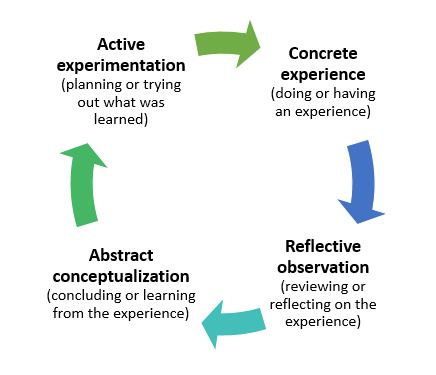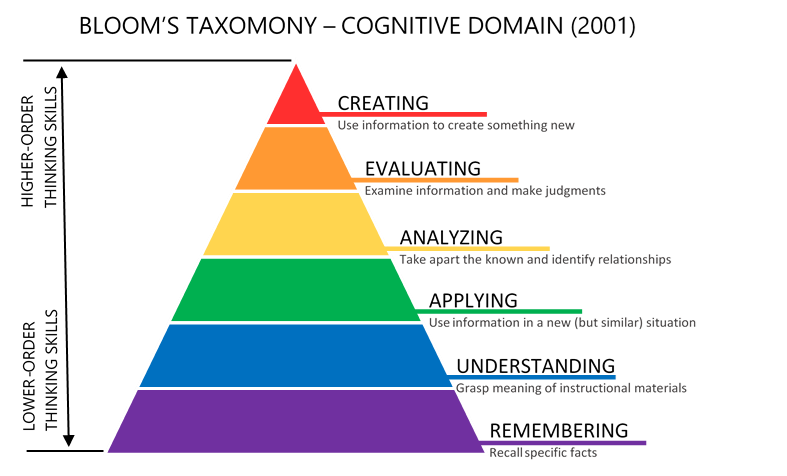5 Review of Kolb and Bloom
Understanding Kolb and Bloom is extremely important for Credit for Prior Learning, because Credit for Prior Learning awards credits for the learning you’ve done (not just for the experience by itself). In other words, you have to show your faculty reviewers both what you learned (your expertise in the course subjects) and how you learned it.
And we use Kolb and Bloom to show how you learned things.
So let’s take a moment to help you get a grasp on how you learned what you already know. If this introduction to Kolb’s Experiential Learning Cycle and Bloom’s Taxonomy feels intimidating to you, step back and believe in yourself!
Here’s the key: you know this stuff already!
You might not know the terminology, like taxonomies, learning cycles, etc., or the names of Kolb and Bloom, but you know these concepts intuitively. (And here’s a good place to point out the difference between tuition, which is the cost of education, and intuition, which is education earned through work until it’s ingrained. You’ve earned the knowledge of both Kolb and Bloom through your prior learning experiences.
So if this feels intimidating, slow down and think through both Kolb and Bloom.
 |
| For Kolb’s Experiential Learning Cycle, think through how you got really good at something, anything, and you’ll start to see the steps in the Experiential Learning cycle that Kolb outlined.
For this short exercise, don’t think about the courses you’re challenging for college credit; think about something you do in your everyday life: cooking, playing a sport, artwork, singing or playing an instrument, building or fixing things, that kind of stuff.
Once you figure out where you started, go around the circle and think about what you did next. For this, let’s try translating the terminology:
And even if you change the starting place, the cycle still works. For example:
Your job with Credit for Prior Learning is showing your faculty reviewers that you understand how you learned the course material through real-world experiential learning. So you’ll use Kolb’s Experiential Learning Cycle to outline your experience and show your faculty reviewer how you learned the material and got to be an expert in the subject matter of the course that you’re challenging. |
 |
| For Bloom’s Taxonomy, you can ignore Remembering and Understanding, the bottom two levels, because our job is to show college-level learning. Remembering and Understanding are what we did on tests we took in high school, where we memorized historical dates or math equations in order to pass a test, and then immediately forgot them. That’s not higher-order thinking!
To get to those levels of higher-order thinking in Bloom’s Taxonomy, choose something you know really well and can have very geeky, highly-technical conversations about. Something that you can almost speak in secret code language about to someone else who knows it well. Something that you know deeply that you might have a hard time explaining to someone who’s new at it. Now, how do you think about that topic?
If you do any of these things with something you’re good at, then you’re doing those upper levels of Bloom’s Taxonomy! Your job with Credit for Prior Learning is showing your faculty reviewers that you know how to think in these upper levels of Bloom’s Taxonomy about the subject matter of the course material. |
So, pat yourself on the back! You know this intuitively!

